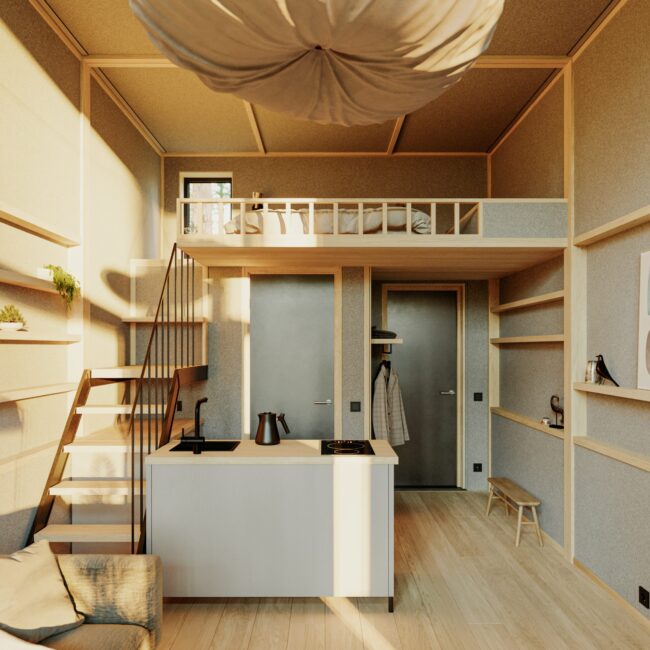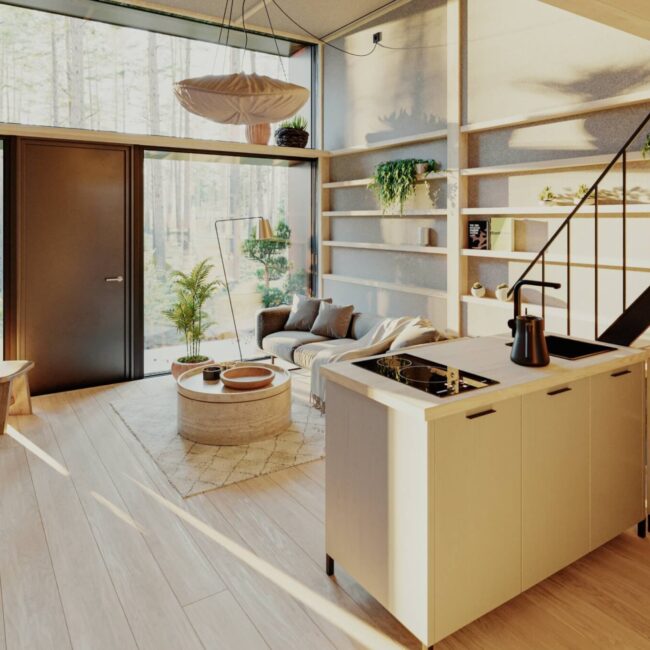Introducing affordable tiny home -
KODA Flex by Kodasema
Steel-Frame Modules
Energy label
A / B
Net Surface
26m2
Ceiling Height
3.4m
Turn-Key Solutions
KODA Flex represents a unique collaboration between KODEA and our long-term partner, Kodasema. Together, we introduce an affordable living solution that combines innovation, functionality, and award-winning design.
Tiny House KODA Flex
Discover KODA Flex, the more budget-friendly addition to the KODA prefab tiny home family. Utilizing KODEA’s high-precision automated manufacturing robotics, the Flex model maintains the award-winning design KODA is renowned for. It provides everything you need for comfortable living while achieving cost-efficiency through economy finishing materials and integrated standard fittings.
Built with KODEA Technology
KODA Flex is up to 2x more affordable thanks to implementing KODEA Microfactory solution, a high-precision automated manufacturing robotics.
Time to market
KODEA Tiny House projects can be completed up to 50% faster than traditional construction and are less vulnerable to construction-related delays.
Designed for multi-purpose
Our Tiny House suits to various lifestyles, from eco-friendly compact living to contemporary urban spaces, multi-purpose guesthouses, efficient home offices, or peaceful getaways. It’s an affordable living space with endless possibilities.
Interior finish
The wooden structure of KODA Flex is visible on the interior walls, serving as shelves and combined with various natural wall panels like felt and plywood. You have the flexibility to modify the finishing of the KODA Flex’s natural materials (such as treatment or painting) to suit your preferences or accommodate any future needs.
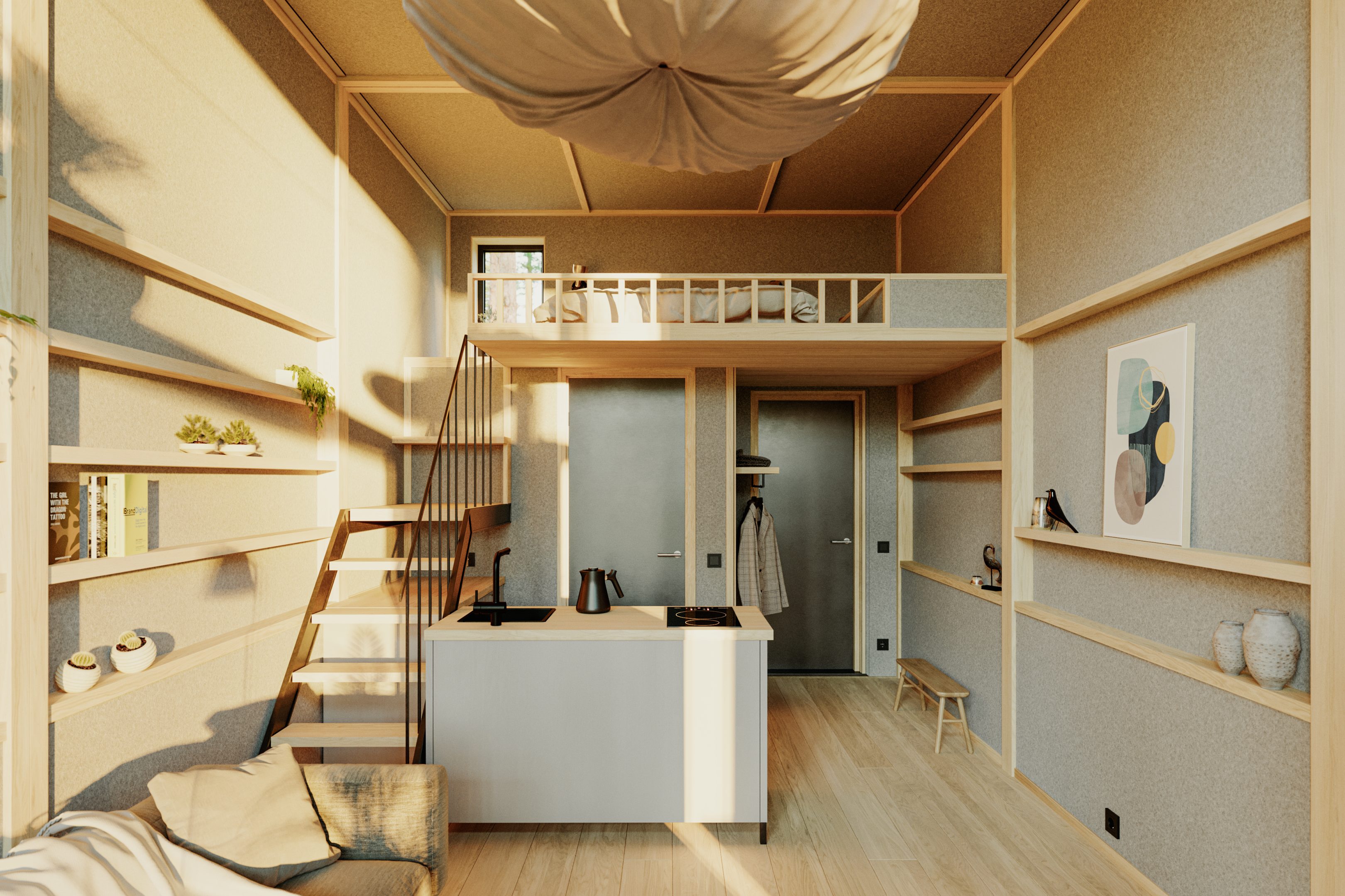
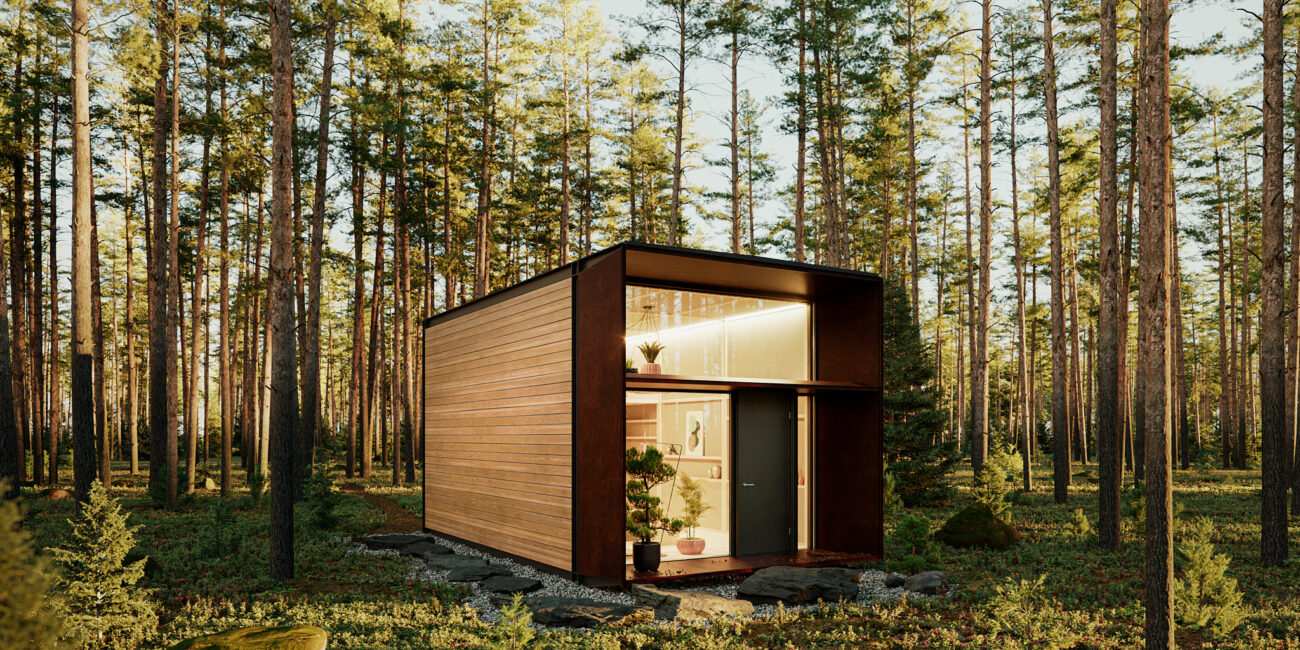
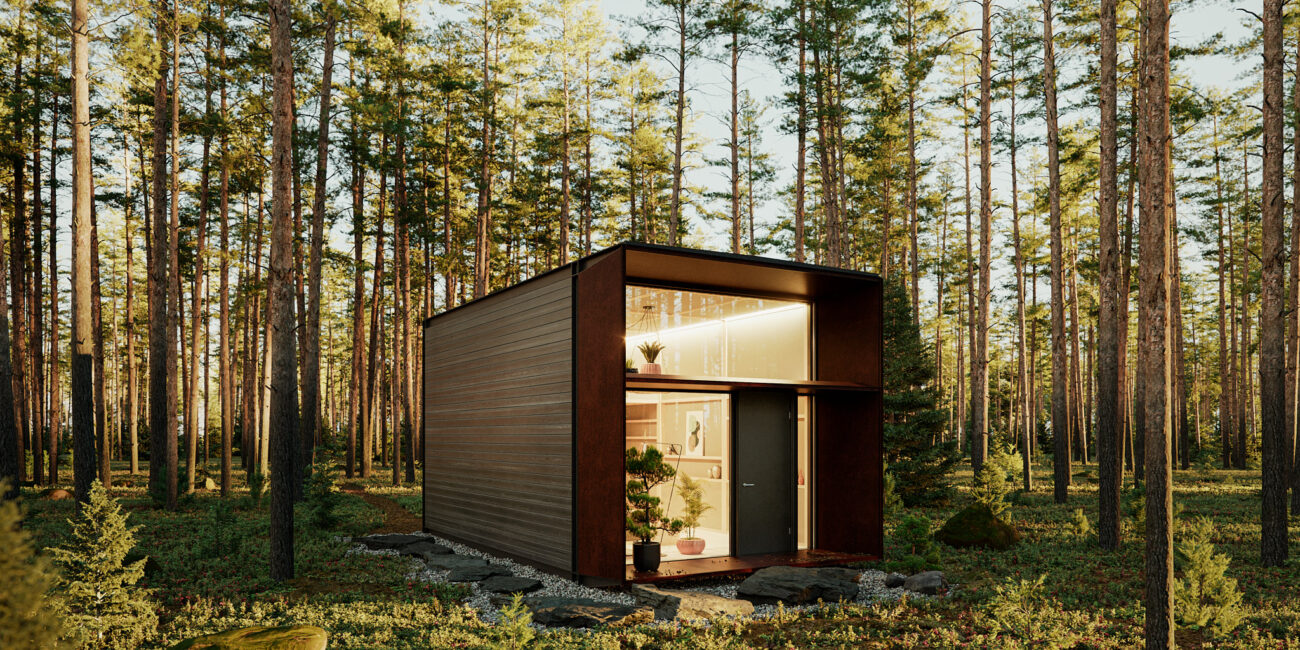
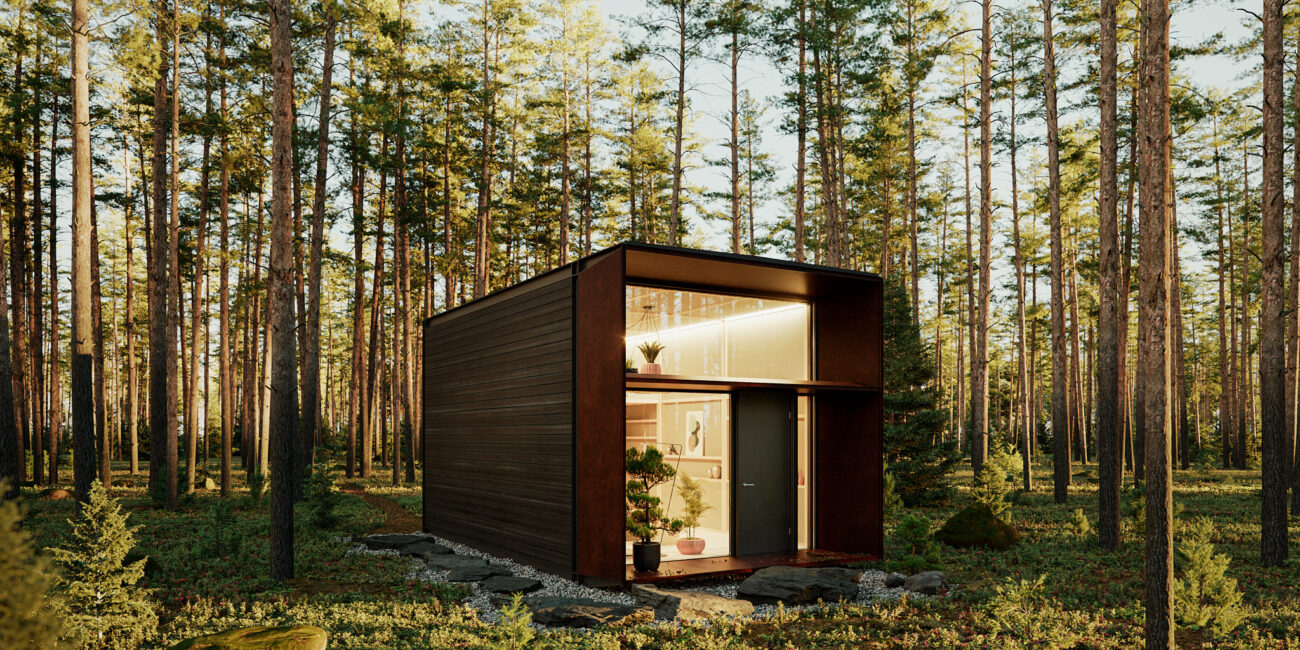
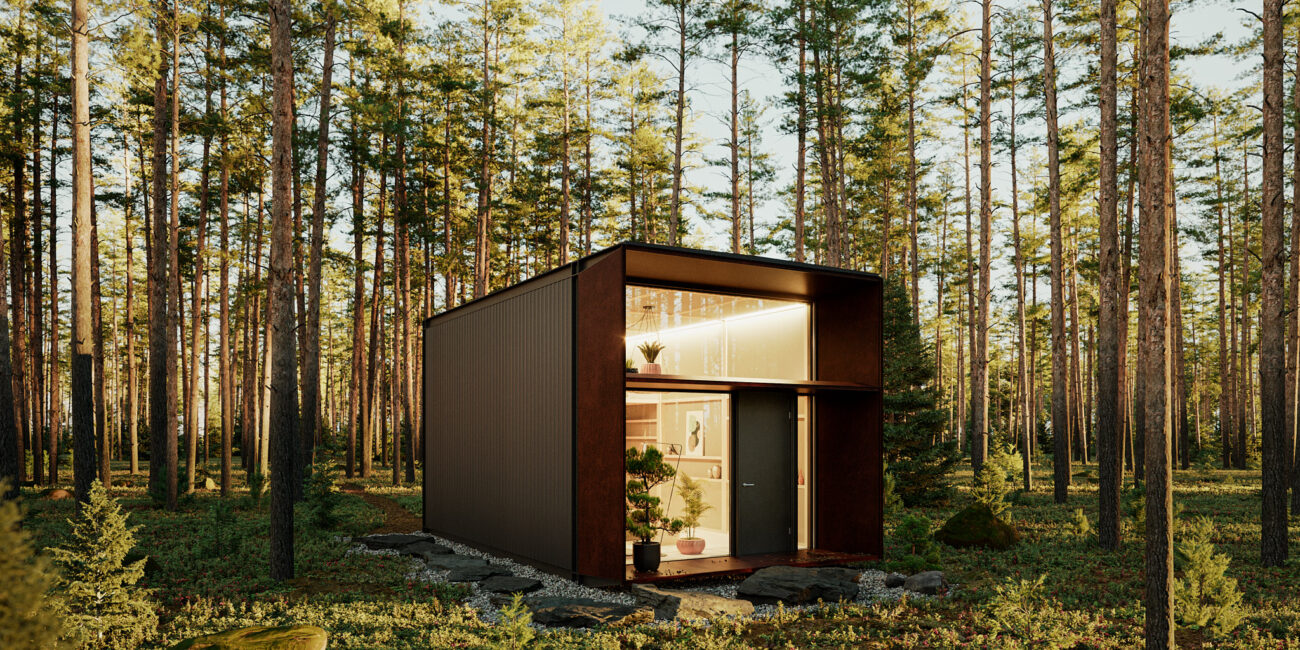
KODA Flex Interior
In the KODA Flex, every detail has been meticulously designed to elevate your living experience. It’s not just a tiny house; it’s a canvas for you to express your style and create a personalized space within the embrace of award-winning design and affordability.
Comfort and Safety Combined: Safe and stylish with fire-retardant fabric on walls and ceiling.
Natural Aesthetics: Timber-designed framing and laminate flooring for a touch of nature.
Bathroom Bliss: Tastefully furnished bathroom with LED lights.
Elevated Sleeping Quarters: Mezzanine area with stylish stairs.
Customizable Extras: Tailor your space with LED lights, underfloor heating, and more.
Functional Additions: Kitchen window, extra door, side-window, and a well-equipped kitchen.
Elevate your living experience with KODA Flex, designed to reshape the boundaries of modern living.
Frequently asked questions
Here are answers to some of the common questions about modular houses that clients ask.
Does KODEA help with obtaining a building permit?
Sure, we are happy to help you with the permit process from start to finish.
Is there a difference in the construction between modular houses and site-built houses?
The primary difference between modular houses and site-built houses is the process. Modular houses are built within a controlled factory environment, which allows for improved quality and precision in the fabrication of the components. KODEA room modules are manufactured by robots and are engineered for faster, higher quality, and more efficient construction. Modular houses use the same materials as traditional site-built homes and must comply with all applicable regulations.
Can KODEA modular houses be customized?
While we’re specialized in mass-production, every customer of ours has different preferences and different regional requirements. As long as the design can be broken down into modular units and ordered in bulk, KODEA’s modular houses can be built in various shapes, styles and configurations.
Does modular houses have thin walls?
Actually, modular houses don’t have thin walls. KODEA room module walls are built with a double-insulated system. Our wall thickness between apartments come 8.5 to 12 inches (22-30cm). The room acoustics is measured at 59 dB, which exceeds the norm by 4dB.
What is the difference between modular houses and prefabricated element houses?
Modular houses and element houses are both built in a controlled factory environment. The difference of them lies in the construction method:
Modular house construction – Buildings are produced in separate three-dimensional sections, called modules, where the ceiling, floors and walls are already joint with electricity and plumbing installed. Using a crane system, the house is then assembled on-site from modules, enabling a quick and accurate erection of the building.
Element house construction – Buildings are assembled from two-dimensional pre-fabricated sections – walls, floors and ceilings. Once they are connected and the house is made watertight, then electricity, plumbing and internal works, such as plasterboard, can begin.
